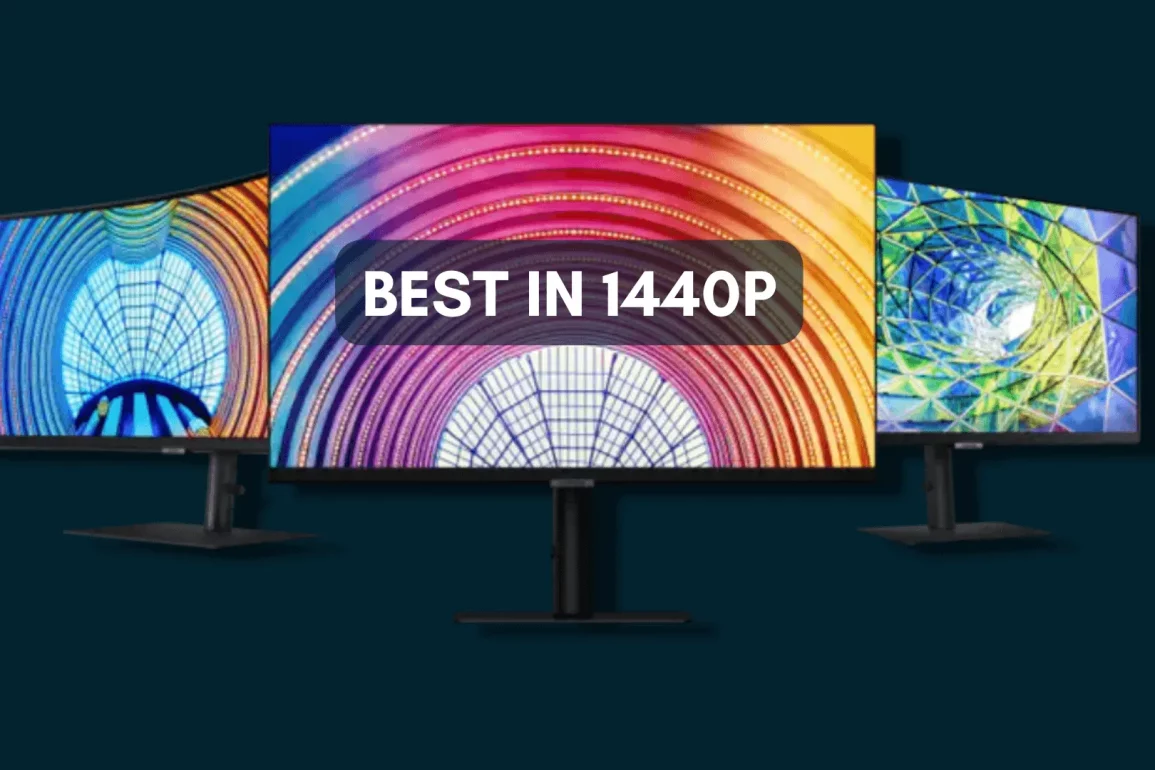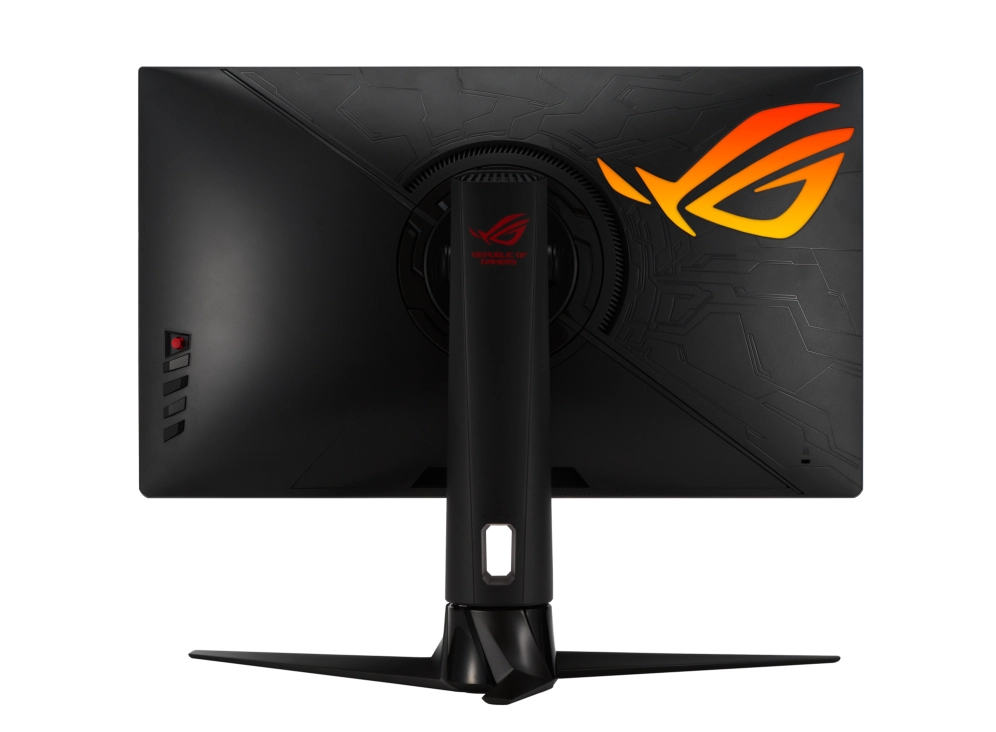Last Updated on May 19, 2024 by Team Yantra
While the 1080p is the current mainstream resolution for monitors, 1440p (or 2K or WQHD) is increasing in popularity because of its falling prices.
2K monitors offer a significant boost in the quality of your image while being not too expensive compared to 1080p monitors. 1440p monitors are great for gaming purposes while also providing a great experience with content creation or content consumption.
With an increasing number of 1440p monitors entering the Indian market, here are some of the best monitors you can buy now.
MSI Optix MAG274QRF – QD
Quick Specs
- Resolution: 2560 x 1440 (WQHD)
- Panel and Size: 27″, Rapid IPS
- Refresh Rate: 165 Hz
- Colour Gamut: 97% DCI-P3/ 147% sRGB
- Contrast Ratio: 1000:1
- Brightness: 300 nits
- Video Ports: 1x Display Port (1.2a), 2x HDMI (2.0b), 1x Type C (DP alt.)
- USB Ports: 2x USB 2.0 Type A, 1x USB 2.0 Type B
- Dynamic Refresh Rate: G Sync Compatible, 48Hz to 165Hz
- Great response times
- Good motion performance
- Great build quality
MSI MAG274QRF is a 27inch, IPS panel monitor with a 165 Hz refresh rate. The quantum-dot technology further enhances the experiences.
This monitor has the fastest response time and motion performance in the 1440p monitor category.
Even though it has a fast response time, it does not sacrifice colour or viewing experience. It also had one of the widest colour spaces, covering almost all the DCI-P3. Plus, its sRGB mode helps in avoiding the over-saturation of the colours.
The QD model comes at a price tag of ₹46,000 and the non-QD model is more reasonable at ₹35000. If you are looking for an all-rounder and reasonably priced monitor for gaming and content creation, this is the best you can have.
Asus ROG Strix XG27AQM
Quick Specs
- Resolution: 2560 x 1440 (WQHD)
- Panel and Size: 27″, IPS
- Refresh Rate: 270 Hz
- Colour Gamut: 97% DCI-P3/ 150% sRGB
- Contrast Ratio: 1000:1
- Brightness: 350 nits
- Video Ports: DisplayPort 1.4 DSCx 2, HDMI (v2.0)x 2
- USB Ports: USB Hub : 2x USB 3.2 Gen 1 Type-A USB 3.0 (Signal) x 2
- Dynamic Refresh Rate: G Sync Compatible, 48Hz to 165Hz
- Great response time
- Various levels of overdrive settings
- Wide colour gamut
- HDR is not its selling point
- Expensive
Asus ROG Strix XG27AQM is a 27-inch, IPS panel monitor with a high refresh rate of 270Hz (overclockable). With a colour space of up to 97% DCI-P3 that is equal to 150% sRGB.
With a peak brightness of 350 nits and 400nits with HDR, it has enough visibility in a well-lit room.
It is basically a souped-up version of the earlier listed MSI Optix MAG27QRF. It has an exceptionally good response time and a good motion performance even at a lower refresh rate.
It has 6 levels of overdrive settings to counter ghosting and overshoot. You can also change the overdrive setting while using variable refresh rate which is supported with both Nvidia G Sync and AMD Freesync.
Overall, it’s a top-performing monitor most suitable for playing competitive titles at a high refresh rate without compromising on its colour and display quality.
Although it is expensive, coming at ₹71,000, it is worth the money if you want the best.
- Wide colour gamut
- Various levels of overdrive settings
- Very low latency and amazing repsonse times.
- HDR is not its selling point
- Expensive
Samsung Odyssey G7 (27 inch 240Hz/32 inch 240Hz)
Quick Specs
- Resolution: 2560 x 1440 (WQHD)
- Panel and Size: 27″, IPS
- Refresh Rate: 240 Hz
- Colour Gamut: 97% DCI-P3/ 125% sRGB
- Contrast Ratio: 2500:1
- Brightness: 300 nits
- Video Ports: DisplayPort 1.4 DSCx 2, HDMI (v2.0)x 2
- USB Ports: 2x USB 3.2 Gen 1 Type-A USB 3.0 (Signal)
- Dynamic Refresh Rate: G Sync, AMD Freesync Premium
- Great response time
- Various levels of overdrive settings
- Wide colour gamut
- Aggressive curvature
- Expensive for VA panel
While most of the monitors come with IPS panels, considering how good they have become now, VA panel is becoming less of a mainstream choice. While all the monitors are IPS panels, here’s one with a VA panel.
Samsung Odyssey G7 is a performance monitor with a 27-inch VA panel QLED monitor with a 240Hz refresh rate. A VA panel on average has lower response times compared to IPS panels but this monitor is no slouch by any means.
Like all the monitors listed above, its performance is good but it has some drawbacks that a VA panel has like narrow viewing angle and bad local dimming.
This monitor is apt for gaming with deeper blacks with a contrast ratio of 2500:1. It has a good response time and performs well at a lower refresh rate too. It features support for both Freesync and G-Sync and has exceptionally low input lag.
Since it is a curved monitor, working on it is not ideal because of its rather aggressive curvature of 1000R.
Overall, a great pick for you if you want it for pure gaming. Although, it is a little expensive (₹44,499) considering you can get all these things with an IPS panel minus the minor setbacks a VA panel has.
It also has a 32-inch model with the same specifications if you are interested in buying a larger 32-inch monitor.
Gigabyte M27Q
Quick Specs
- Resolution: 2560 x 1440 (WQHD)
- Panel and Size: 27″, IPS
- Refresh Rate: 170 Hz
- Colour Gamut: 92% DCI-P3/ 140% sRGB
- Contrast Ratio: 1000:1
- Brightness: 300 nits
- Video Ports: 1x DisplayPort 1.2, 2x HDMI 2.0
- USB Ports: 2x USB 3.0, 1x USB Type-C
- Dynamic Refresh Rate: AMD Freesync Premium
- Great value monitor
- KVM
- Good contrast ratio
- Sub BGR pixel layout
Gigabyte M27Q is a 27-inch, IPS panel monitor with a 144Hz refresh rate. It’s a more budget-oriented monitor but packs immense value at the price point.
Coming at only ₹27,999, it’s one of the cheapest 1440p gaming monitors in the market right now without compromising much on the features and performance. It covers 140% of sRGB colour space which is great to have at this price point.
It has a decent, mid-range response rate not too far from the likes of MSI MAG274QRF and offers a good experience while gaming. It balances quite well between gaming performance and colour quality while being cheaper than other mid-range options.
It includes KVM which allows you to switch between multiple connected devices and control them with only a set of keyboard and mouse.
The one downside to this monitor is its sub-BGR pixel layout, as opposed to the standard RGB layout. This causes the text on the screen to appear blurry but it is a minor issue and despite that this monitor provides excellent value.
Overall, a solid option and an amazing value 1440p monitor worth every penny.
There is another more budget-friendly option Gigabyte G27Q at ₹23,499 which performs the same as M27Q but skips on a few features like USB Type C, KVM switch and covers 120% of sRGB colour space.
Dell S2721DGF
Quick Specs
- Resolution: 2560 x 1440 (WQHD)
- Panel and Size: 27″, IPS
- Refresh Rate: 165 Hz
- Colour Gamut: 92% DCI-P3/ 140% sRGB
- Contrast Ratio: 1000:1
- Brightness: 300 nits
- Video Ports: 2 x HDMI, DisplayPort 1.4 mode
- USB Ports: 4 x USB 3.0 downstream, USB 3.0 upstream
- Dynamic Refresh Rate: Nvidia G-Sync, 48Hz to 165Hz.
- Good colour coverage
- Good response times for mid-range option
- Good build quality
- No sRGB mode
Dell S2721DGF is a 27-inch, IPS panel monitor with a 165Hz refresh rate. In terms of performance, it is slightly better than the Gigabyte M27Q but has a worse contrast ratio and doesn’t include the sRGB mode, which makes it prone to over-saturation.
It is by no means a bad monitor and it has the standard RGB layout as opposed to the BGR pixel layout in Gigabyte M27Q which might make some buyers incline more toward this monitor.
In terms of features, Dell S2721DGF doesn’t have KVM and is slightly more expensive than the Gigabyte monitor featured on this list. coming at a price of ₹33,999. It also has a bit wider colour space coverage with 98% DCI-P3.
Overall, it is a good mid-range monitor with all the features necessary for gaming or content creation and consumption. Considering the price and performance very close to MSI MAG27QRF, it is a great value 1440p monitor.
Conclusion
1440p (QHD) monitors are the sweet spot for gaming and content creation tasks. Modern GPUs even of a relatively lower tier can provide a decent 1440p gaming experience. And getting a 27-inch for 1440p is optimal in most cases mainly because of high pixel density.
If you need a larger screen, 32 inches can be a good choice but you will have to sacrifice crisp image quality and high pixel density. If you need a bigger screen just for content consumption, getting a 4k monitor is better than a 1440p monitor.






Leave a Reply
You must be logged in to post a comment.